 |
|
|
Egyed Ákos - Transylvanian Museum Society
|
Greetings
It was a historical moment, when on the 23rd of November 2002 we signed in the name of the Presidency and the members of the Hungarian Academy of Science together with the academician Egyed Ákos, the president of the Transylvanian Museum Society the contract of collaboration, whose aim is that the Hungarian Academy of Science should fulfill its centuary responsability: that of supporting the Transylvanian Museum Society.
This continues the tradition of our great ancestors who realized that at Kolozsvár, the city which gave during the centuries important and world-wide known representatives to the Hungarian culture and science, and which took always and in all the conditions care of the Hungarian culture, it would be needed a scientifical center which could become the brother organization of the Hungarian Academy of Science. In this manner we conserve the recognition of the following things named very nice by Márai Sándor: the country, the people and the father-land. Facts, countries and people can form a fatherland only if the mother tongue names the facts: there is no other father-land than the mother tongue. (Márai Sánodor's Journal 1968-1976). The Hungarians of Transylvania need the Hungarian culture.
It was the idea of the science written in mother tongue that lead the Transylvanian personalities since the 1760's, so that after a century thoughts would become deeds and dreams would become truth. The hardships of these one hundred years met in the foundation of a scientifical society and a library, represents in fact the difficult fate of the Hungarian people and among them the Hungarians of Transylvania -in spite of these difficulties they never gave up their dreams. Bod Péter (1760), count Batthány Ignác, Roman-Catholic Bishop of Transylvania (1785), Aranka György (1791), Döbrentei Gábor (1814-the founder of the first scientifical Hungarian magazine in Transylvania), Bölöni Farkas Sándor (1829- the elaborator of the first aim-oriented museum program) were those who dreamt about the Hungarian scientifical life, their dream could only come true in 1859 through the devotement and sacrifice of count Mikó Imre. For the fulfillment of this scope it were needed the dreams of the great personalities of that century.
Toldy Ferenc the secratary of the Academy on the 23rd November 1856
wrote a letter to the members of the Academy in which he asked them
to become founder members and to support the cause with 100 Ft. each.
He informed the members that Transylvania with the allowence of the
Government would have a scientifical board. The main supporter of
this cause was his excellency count Mikó Imre. He motivated this saying
that the Transylvanian Museum Society is the cause of the Hungarian
people and it would be the bond of the two countries. This had been
signed by 24 members of the Academy. Among them Baron Eötvös József,
Toldy Ferenc, Czuczor Gergely, Bugát Pál, Kemény Zsigmond, Gethardt
Ferenc, Barabás Miklós.
Mikó wrote to the director council of the Academy that he was thankful for the material support given to the little brother and he also reccommended that the Academy would not forget him in the times to come.
The date on the envelope is the 24th October 1859, the addressee of it is count Dessewffy Emil, the president of the Hungarian Academy of Science, the writer of the letter is count Mikó Imre.
"Resulting of the love, support and influence which bonds the two lands so tightely (he wrote this in the era of the Absolutism) we announce you with great pleasure that the Transylvanian Museum Society will have its founding assembly on the 23rd day of the next month at Kolozsvár.
Among our aims -wrote the count- is to save our perishing antiquities, to collect and edit the writings, documents referring to our history, to make the beauties of our very rich country known from the perspective of natural science. So this is the aim to reach step by step by the Transylvanian Museum Society. But in order to reach it, it is needed the help of all of us. That's why we ask the Academy to send participants to our first assembly, and to support us further on. This is the cause of the nation and of the country and that's why the Academy should be not only the representative of it but also the supporter."
Verbum caro factum est-one can read in the ceremonial hall of the Protestant Theology. Yes, words had become deeds, those of Mikó Imre had become reality.
After 30 years from the founding assembly they could affirm remembering count Mikó Imre that the seed planted by him had become an oak, and thanks to the Széchenyi of Transylvania, Transylvania has its own scientifical center, Academy. This reality also vanished in other dreams, so that other scientists through other hardships and even from the most impossible situations should transform these dreams again back to reality.
I think Bolyai was right to say that we should excel not in rude power but in knowlwdge. For the Hungarian people knowledge is the only way to save itself, as this was its only refuge after Trianon as well. Today in the XXIst century knowlwdge has become very important, as the value of each goods is given by the invested knowledge and not the value of the row material. The Hungarians from outside the borders wheter they live as minorities or not have one ace: science. For count Mikó Imre the historical basis, the mother tongue, the traditions and the morality formed the way of survival for the Hungarians. We must complete this with one more thing: knowledge. In the XXIst century there is one formula knowledge and information is power. Unfortunately from this formula something misses: morality. This is our duty, your duty: to teach the Hungarian people morality. Because natural science and social science teaches in fact also morality. What is our ethos: searching for the truth. We learn and research in order to find the truth. This is a moral attitude. I consider that when the Hungarian Academy of Science decided to fulfill the responsability assumed by count Széchenyi István to help the Transylvanian Museum Society, fulfilled in fact its moral obligation. As count Mikó Imre wrote in his letter to the Academy: "This is the cause of the nation and of the country and that's why the Academy should be not only the representative of it but also the supporter".
The Transylvanian Museum Society and the Hungarian Academy of Science, these two brother institutions collaborate in a manner which may become an example for the political leaders of Europe: important for those of Hungarian mother tongue and useful for the whole of the two neighbouring countries, too.
Vizi Szilveszter
The president of the Hungarian Academy of Science
The Transylvanian Museum Society-Academical Society: Foundation, Mission and History
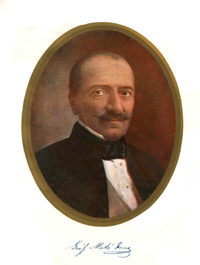 The Transylvanian Museum Society (TMS) is the biggest scientifical society having an academical aspect. Its foundation was the result of that public will which had existed from the begginning of the Transylvanian Principality, but which could not had beed satisfied because of the hard conditions of that period. Also its foundation was decided in 1841-42 by the Transylvanian Parliament, it could have been founded only in 1859 due to the efforts of count Mikó Imre and his fellows as a civil organization concetrating Transylvanian scientists and scholars. This was called and it is called nowadays as well the Transylvanian Academy.
The Transylvanian Museum Society (TMS) is the biggest scientifical society having an academical aspect. Its foundation was the result of that public will which had existed from the begginning of the Transylvanian Principality, but which could not had beed satisfied because of the hard conditions of that period. Also its foundation was decided in 1841-42 by the Transylvanian Parliament, it could have been founded only in 1859 due to the efforts of count Mikó Imre and his fellows as a civil organization concetrating Transylvanian scientists and scholars. This was called and it is called nowadays as well the Transylvanian Academy.
The founding assembly was between the 23rd and 26th of November 1859 at Kolozsvár. Count Mikó Imre, the Széchenyi of Transylvania, the beginner of the association work was elected to be president (he also donated his house and garden in order to help materially the Society). In the conditions created by the absolutism Mikó considered the protection of the mother tongue the most important issue of the Transylvanian Museum Society (TMS), this could not have been the object of any bargain. He had been the president of the Transylvanian Museum Society (TMS) till 1876. The Statute decided the three most important aims of the Society:
-the foundation and the maintainance of the Society
-the processing of the museum's material
-the study and cultivation of science in Hungarian language
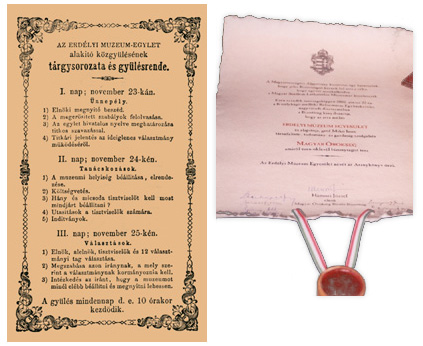 Since its coming into being the Transylvanian Museum Society (TMS) had the support and trust of the Hungarian Academy of Science.
Since its coming into being the Transylvanian Museum Society (TMS) had the support and trust of the Hungarian Academy of Science.
Its activity had great impact in the cultivation of sciences: among the outstanding scholars we should mention Brassai Sámuel (1797-1897), Szabó Károly (1824-1890), Kováry László (1819-1907), Jakab Elek (1820-1897), Márki Sándor (1853-1925), Balogh Erno (1882-1969), Szádeczky Kardos Gyula (1860-1935), Schneller István (1847-1939), Hogyes Endre (1847-1906), Apáthy István (1863-1922), György Lajos (1890-1951), Tavaszy Sándor (1888-1951), Herman Ottó (1845-1912), Pósta Béla (1862-1919), Kelemen Lajos (1877-1963), Szabó T. Attila (1906-1987) and we could name others too. During the years of existence more than 40 members of the Transylvanian Museum Society (TMS) became members of the Hungarian Academy of Science. The books edited by it constitute a whole library of scientifical literature, which enrich the whole Hungarian culture. For this activity the Transylvanian Museum Society (TMS) was given in 2002 Hungarian Heritage Prize.
In the very first decade of its existence the Society created a valuable collection of books, hand-written documents, coins and antiquities, natural science pieces and a letter archive which are now parts of the historical and natural treasures of Transylvania.
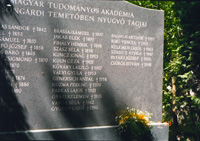 In the same time with the museum's material processing different sections came into being as the scientifical work had gegun. The collections of the Transylvanian Museum Society (TMS) and that of its scholars contributed to the fact that from among the competing cities of Transylvania Kolozsvár was chosen to have the second science university of the country.(Hungarian Royal Science University, later Ferenc József University). It is not just a coincidence that the two institutions began to collaborate: the Transylvanian Museum Society (TMS) let its book collection be used by the University for a sum allocated by the Hungarian state. Later it gave the Mikó Garden in order that the cliniques of the University should be built.
In the same time with the museum's material processing different sections came into being as the scientifical work had gegun. The collections of the Transylvanian Museum Society (TMS) and that of its scholars contributed to the fact that from among the competing cities of Transylvania Kolozsvár was chosen to have the second science university of the country.(Hungarian Royal Science University, later Ferenc József University). It is not just a coincidence that the two institutions began to collaborate: the Transylvanian Museum Society (TMS) let its book collection be used by the University for a sum allocated by the Hungarian state. Later it gave the Mikó Garden in order that the cliniques of the University should be built.
In spite of its hesitations till the changes occured in 1919 the Transylvanian Museum Society (TMS) served the fulfillment of its aims which were decided in the Statute.
The regime-change of 1919, put the Transylvanian Museum Society (TMS) in a very difficult situation. Only after years of struggle could the licence from the Romanian state be obtained, and meanwhile for the using of the Transylvanian Museum Society (TMS)'s collection neither the Hungarian University nor the Romanian which took the former's place paid the tax. The Romanian statal institutes and universities took the following things being in the patrimony of the Transylvanian Museum Society (TMS): the library containing 120 000 of books, the institutional letter archive collected from the beginning of the existence, 35 000 pieces of antiquities, 20 000 coins, 1554 etnographical articles, 64 839 zoologycal articles, and the collection of 73227 pieces of minerals and geological goods. This was the biggest scientifical collection in Transylvania, collected through the efforts and sacrifices of the Transylvanian Hungarians from the beginnings of the existence of theTransylvanian Museum Society (TMS). No deal with the Romanian authorities was possible regarding the collections, but their safity was insured with a few exceptions by the Romanian university teachers, and the Transylvanian Museum Society (TMS) kept its control-right above these collections, it fought for the independence of the Society and for its legal properties.
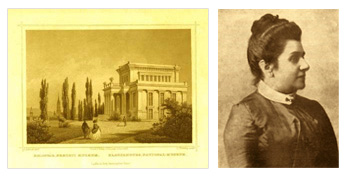 The Society was helped by countess Wass Ottilia (1829-1917), who donated her house situated right in the center of the city to the Transylvanian Museum Society (TMS). This was a modest but a sure basis in the life of the Society. Soon one could see that without the University after the regime-change, the Transylvanian Museum Society (TMS) is even more needed: it was the institution that could ensure the continuity of the scientifical life-we can read this in the short history written by Szabó T. Attila. Even if the 1920' and 1930' years meant the struggle for the existence with the Romanian authorities, there began the scientifical work too, and after 1930 it became regular. The travelling assemblies had also a very important role.
The Society was helped by countess Wass Ottilia (1829-1917), who donated her house situated right in the center of the city to the Transylvanian Museum Society (TMS). This was a modest but a sure basis in the life of the Society. Soon one could see that without the University after the regime-change, the Transylvanian Museum Society (TMS) is even more needed: it was the institution that could ensure the continuity of the scientifical life-we can read this in the short history written by Szabó T. Attila. Even if the 1920' and 1930' years meant the struggle for the existence with the Romanian authorities, there began the scientifical work too, and after 1930 it became regular. The travelling assemblies had also a very important role.
 After the second WW, the Transylvanian Museum Society (TMS) had to face the difficulties of a new beginning, but they succeded in the relounching of the work. In 1947 based on false accusations among other Transylvanian institutions it was closed, its patrimony was given in the competence of statal intsitutes.
After the second WW, the Transylvanian Museum Society (TMS) had to face the difficulties of a new beginning, but they succeded in the relounching of the work. In 1947 based on false accusations among other Transylvanian institutions it was closed, its patrimony was given in the competence of statal intsitutes.
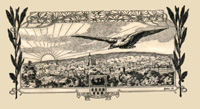 After a forced interruption of 40 years, in which its members kept the spirit of it and continued the scientific research in individual workshops, after the revolution of 1989 the Transylvanian Museum Society (TMS) began its activiy as a legal entity based on the former already existing rules.
After a forced interruption of 40 years, in which its members kept the spirit of it and continued the scientific research in individual workshops, after the revolution of 1989 the Transylvanian Museum Society (TMS) began its activiy as a legal entity based on the former already existing rules.
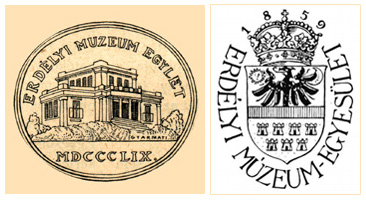 With the knowledge of the legal continuity of the Transylvanian Museum Society (TMS) it expressed its request for its patrimony and collections. The house of Wass Ottilia which in the Land Register still figured as her property, was given back by an Ordonance to the Transylvanian Museum Society (TMS) in 1998, but practically nothing had happened. Although there is no positive change regarding the collections either the Transylvanian Museum Society (TMS) cannot give up its fortune and independence. The Presidency considers still its duty the rcovery of the collections.
With the knowledge of the legal continuity of the Transylvanian Museum Society (TMS) it expressed its request for its patrimony and collections. The house of Wass Ottilia which in the Land Register still figured as her property, was given back by an Ordonance to the Transylvanian Museum Society (TMS) in 1998, but practically nothing had happened. Although there is no positive change regarding the collections either the Transylvanian Museum Society (TMS) cannot give up its fortune and independence. The Presidency considers still its duty the rcovery of the collections.
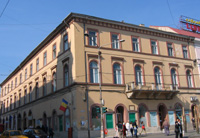 In spite of the undoubtedly existing obstacles -most of them financial- the Transylvanian Museum Society (TMS) found its function in the situation that followed the year 1989. Professor Jakó Zsigmond -the president- wrote in 1990: "We always considered the Transylvanian Hungarians part of the Hungarian nation and its culture part of the universal Hungarian culture, but we acted in our scientifical activity so that it would be for the benefit of Romania and the Romanian and universal scientific life, and we would like to continue acting so in the future too. We consider that the interaction among nations is very important, and it is also very useful in the scientific activity. We are ready as well as an institution and individually for any kind of collaboration with everyone, who is an equal partener and needs our help."
In spite of the undoubtedly existing obstacles -most of them financial- the Transylvanian Museum Society (TMS) found its function in the situation that followed the year 1989. Professor Jakó Zsigmond -the president- wrote in 1990: "We always considered the Transylvanian Hungarians part of the Hungarian nation and its culture part of the universal Hungarian culture, but we acted in our scientifical activity so that it would be for the benefit of Romania and the Romanian and universal scientific life, and we would like to continue acting so in the future too. We consider that the interaction among nations is very important, and it is also very useful in the scientific activity. We are ready as well as an institution and individually for any kind of collaboration with everyone, who is an equal partener and needs our help."
Since its renewal the Transylvanian Museum Society (TMS) continued its traditions and tries to reform structurally and esentially according to the new request of the society.
The Situation of the Transylvanian Museum Society (TMS). Structure and Policy.
The Transylvanian Museum Society (TMS) is a Society with a unique and particular structure constituted by the situation of the Transylvanian Hungarians. It is an integrating frame-institute, and in the same time it has its own workshops and it also maintans public scientific libraries.
According to the 2005 Statistics Transylvanian Museum Society (TMS) has 1532 ordinary members, 102 founding members, 95 sympathising members. Among them 16 academician members, 200 doctors and 700 medicine doctors. We also count 2800 students. The Transylvanian Museum Society (TMS) is the most complex scientifical association, but it does not want to create monopol situation, it wants to have a good relation of strong collaboration with other institutes of the same kind from the country and from abroad.
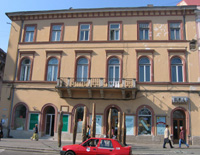 The directive boards are:
The directive boards are:
-The General Assembly
-The Commitee
-The Presidency
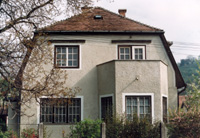 The General Assembly is hold once a year in the first quarter of the year, regularly in March. It debates the reports of the President, the General Secretary, the Financial Counciler, it assents to the new year's budget, the decisions of the Commitee, points out the new duties, it decides about the human resourses: in every four years it confirms or renews the Presidency and the Committee, it elects the Presidents in every four year by sectret voting. The General Assembly is formed by the members of the Transylvanian Museum Society (TMS).
The General Assembly is hold once a year in the first quarter of the year, regularly in March. It debates the reports of the President, the General Secretary, the Financial Counciler, it assents to the new year's budget, the decisions of the Commitee, points out the new duties, it decides about the human resourses: in every four years it confirms or renews the Presidency and the Committee, it elects the Presidents in every four year by sectret voting. The General Assembly is formed by the members of the Transylvanian Museum Society (TMS).
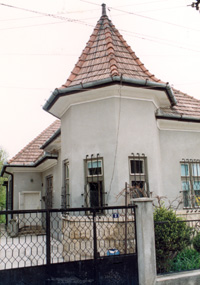 The members of the Presidency: president, 2 vicepresidents, general secretary, financial counciler, juridic advisor, financial inspector, and the persidents of the departments. The Presidency is elected for four years by the General Assembly and it seat is of four years.
The members of the Presidency: president, 2 vicepresidents, general secretary, financial counciler, juridic advisor, financial inspector, and the persidents of the departments. The Presidency is elected for four years by the General Assembly and it seat is of four years.
The commitee is made up of 21 members and this number is devided equally among the departments, a third of its members is changed annually.
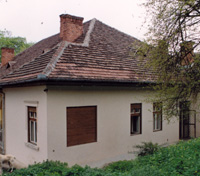 The major workshops are the departments. In the present it has 7 departments:
The major workshops are the departments. In the present it has 7 departments:
1. Letters, Linguistics and History Department (572 members)
2. Natural Sciences (160 members)
3. Medical and Pharmacologycal Department (1039 members)
4. Law, Economics, Social Sciences Department (52 members)
5. Technical Sciences Department (134 members)
6. Mathematical and Informatical Sciences Department (67 members)
7. Agricultural Sciences Department (35 members)
The Departments are lead by elected presidents. The Medical and Pharmacologycal Department works at Marosvásárhely, the rest of the Departments at Kolozsvár. The departments have an annual schedule, and they organize one or more scientific conference in a year. It is of their competence to help the students scientific research and to form research groups.
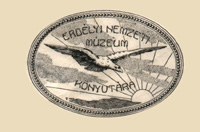 The members of the Departments are employees of other institutions with the exeption of the retired and those who are employees in the Society.
The members of the Departments are employees of other institutions with the exeption of the retired and those who are employees in the Society.
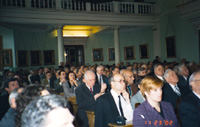 The renewed Transylvanian Museum Society (TMS)'s aim was to form a new department: that of the technical sciences. This is the youngest department, it was constituted after 1990. This department takes care of the modern technical dotation of the workshops. The Mathematical and Informatical Department was formed in 2004, it continues its activity in the sign of modern science. The Agricultural Science Department was constituted in 2005. In our Society there is place for natural science and living science, too.
The renewed Transylvanian Museum Society (TMS)'s aim was to form a new department: that of the technical sciences. This is the youngest department, it was constituted after 1990. This department takes care of the modern technical dotation of the workshops. The Mathematical and Informatical Department was formed in 2004, it continues its activity in the sign of modern science. The Agricultural Science Department was constituted in 2005. In our Society there is place for natural science and living science, too.
The Transylvanian Museum Society (TMS) under the Presidency of Benko Samu created research groups made up by researchers who are employees of the Society. We are now working on the changing of these research groups into a Scientific Institute. The research groups are working on the topics included in the basic strategy of the Transylvanian Museum Society (TMS). In the present there are 4 research groups built up of 12 researchers.
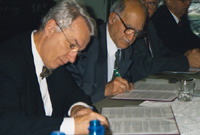 Main duties:
Main duties:
-To edit the Hungarian Dictionary of the History of Words
-to discover historical sources from the Middle Ages, Early Modern Times and Modern Times (the earliest documents, royal books, legal acts, and the sources of other institutions)
-applied informatical sciences
-regional researches
-in the next years the Transylvanian Museum Society (TMS) is preparing to celebrate the 150th year of existence, and on this occasion it plans to edit books and volumes of study and a monography to show the importance of the Transylvanian Museum Society (TMS) in the developement of the Hungarian science.
-in our strategy there is the organization of the regional research. Our aim is that in a period of 15 years we would be able to make the monography of the different regions of Transylvania with the help of the interdisciplinary methods. This will be done in strong collaboration with the Hungarian Academy of Science's Institutes.
The library which came into being as the donation of Jordáky Lajosné, and the name of which is The Jordáky Library contains the books of humanistic sciences, and the library from street Lakatos contains those of natural and technical sciences.In 2005 we renewed our collection of magazines int the central building.
The Transylvanian Museum Society (TMS) has a section which contains manusripts, collection of facsimilae editions and photographies. The collection also has the manuscripts from the heritage of Szabó T. Attila, Bözödi György, Kós Károly, Jordáky Lajos, Imreh István (or parts of these). The database of the Transylvanian Museum Society (TMS) involves the data of the scientifical society of Transylvania, the electronical processing of Bolyai János' manuscripts from Marosvásárhely, the notes of Szabó T. Attila for the Hungarina Dictionary of the history of words, which implies more than one million articles.
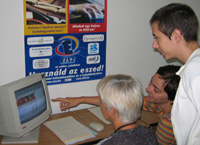 There had been signed a collaboration act among 8 libraries from Cluj Napoca in 2002, whose plan was to elaborate a virtual library: the Transylvanian Museum Society (TMS), the Szabó T. Attila Linguistic Institute, the Heltai Gáspár Librarian Foundation, the Kríza János Ernographical Foundation, the Center for Ethno-Cultural Minorities, the Society of the Hungarian Economists of Romania, the Sapientia Research Projects Institute will proceed elctronically the datas and will give it into use of the Virtual Library of Kolozsvár.
There had been signed a collaboration act among 8 libraries from Cluj Napoca in 2002, whose plan was to elaborate a virtual library: the Transylvanian Museum Society (TMS), the Szabó T. Attila Linguistic Institute, the Heltai Gáspár Librarian Foundation, the Kríza János Ernographical Foundation, the Center for Ethno-Cultural Minorities, the Society of the Hungarian Economists of Romania, the Sapientia Research Projects Institute will proceed elctronically the datas and will give it into use of the Virtual Library of Kolozsvár.
In order that the researches would be modern and up-to-date, we created a modern network in our central building with online Internet connection. The importance of this is to supply informations for the researchers and to make them able to acces to electronical informations easily. The thousands of magazines existing in the Transylvanian Museum Society (TMS)' posession, and the electronical editions (the databese of the researchers) will help towards a better quality work and research.
The publishing activity is part of the structure of the Transylvanian Museum Society (TMS). The Transylvanian Museum Society (TMS) publishes annually 8-10 volumes indivudually or in collaboration with other publishers. Among these the volumes of Hungarian Dictionary of the History of Words, The Hungarian Literature Lexicon of Romania, The Székely Documentation Dictionary, the Transylvanian Scietifical Notes, The Transylvanian Historcal Datas. These implies datas from literature, social sciences, history, natural sciences and medicine. The Transylvanian Museum Society (TMS) also has its own scientific magazines: The Transylvanian Museum (dating from 1874), The Museum Booklet, The Technical Booklets and the Medical Review.
The books and magazines published by the Transylvanian Museum Society (TMS), not only publishes the scientifical results of hungarian scientific life of Transylvania, but also contributes to the maintanance of the Hungarian Language which is importan for the future of Hungarians of Transylvania.
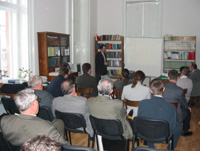 The Transylvanian Museum Society (TMS) is an institute of the whole Transylvania: it implies the sub-offices which exist at Nagyvárad, Zillah, Szilágysomlyó, Szatmár, Marosvásárhely, Gyergyószentmiklós, Barót and Sepsiszentgyörgy. These have autonomy, and their duty is to propagate the scientifical aims of the regions. The travelling assemblies of the Transylvanian Museum Society (TMS) are organized in collaboration with thes sub-offices. On these occasions there are present Hungarian scholars, too.
The Transylvanian Museum Society (TMS) is an institute of the whole Transylvania: it implies the sub-offices which exist at Nagyvárad, Zillah, Szilágysomlyó, Szatmár, Marosvásárhely, Gyergyószentmiklós, Barót and Sepsiszentgyörgy. These have autonomy, and their duty is to propagate the scientifical aims of the regions. The travelling assemblies of the Transylvanian Museum Society (TMS) are organized in collaboration with thes sub-offices. On these occasions there are present Hungarian scholars, too.
The organization of conferences is an institutional tradition. Besides the conferences of the Departmenst, the Transylvanian Museum Society (TMS) organizes conferences on historical dates to commemorate them individually or together with other institutions: in 2002 for the first time the Transylvanian Museum Society (TMS) organized the Day of Science in Transylvania, and this had become a tradition. In every year with occasion of the anniversary of the Transylvanian Museum Society (TMS) they organize this conference. This conference is a good occasion for the Transylvanian Museum Society (TMS) to fulfill its integrating function in the future of the workshops to propagate scientifical interaction and communication.
With the occasion of the Conference in 2002 the president of the Hungarian Academy, Vizi E. Szilveszter and the president of the Transylvanian Museum Society (TMS), Egyed Ákos signed the collaboration act among the two Institutions. The Department for the Hungarian Science Abroad follows the activity of the Transylvanian Museum Society (TMS) and helps its integration in the Hungarian scientifical life. The president of the Transylvanian Museum Society (TMS) is always member of this board.
The policy of the Transylvanian Museum Society (TMS) will not omit the collaboration with Romanian scientifical life either, considering it important for both of the parties. This is also valid for those of german and saxon origin.
To fulfill better its aims the Transylvanian Museum Society (TMS) had restructered and reformed its activity. It created its Academic Board, the members of which are the external members of the Hungarian Academy of Science and that of the Romanian Academy of Science. The represenatives of the ordinary members are also members of this board. This board is a counciling organization of the Transylvanian Museum Society (TMS), and when necessary takes part in the solvation of scientifical issues and problems.
It is necessary for the scientifical research that the Transylvanian Museum Society (TMS)' workshops should self-organize themselves in a Research Institute. This is the duty of the Scientific Board according to the General Assembly's decision in 2005.
It is the result of the reform that there came into being the Committe for Manuscripts and the Commitee for Publishing and Library.
The financial resources were won on different project-competitions from Hungary. It was supplied by the Count Mikó Imre Foundation from Hungary, the Arany János Foundation, the Apáczai Foundation, The National Cultural Program, The Ministry of National Heritage. We obtainde 3 times financial support from the president of the Academy.
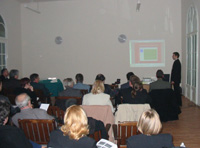 The Transylvanian Museum Society (TMS) can only have flowering activity if the financial support is supplied. In the process of the integration to the UE the existence of the Transylvanian Museum Society (TMS) is twice motivated: to be the preserver of the historical and universal values of Transylvania and to contribute to the developement of the science in Transylvania:
The Transylvanian Museum Society (TMS) can only have flowering activity if the financial support is supplied. In the process of the integration to the UE the existence of the Transylvanian Museum Society (TMS) is twice motivated: to be the preserver of the historical and universal values of Transylvania and to contribute to the developement of the science in Transylvania:
The Transylvanian Museum Society:
Address: Romania, 400009, Cluj-Napoca Napoca street 2-4
Box: 400750, Cluj-Napoca, Post Office no. 1, Box 191
Telephone/fax: +40-264-595176
E-mail: eme.k@email.ro titkarsag@eme.ro
Web page: www.eme.ro
The Department of Medicine and Pharmacology:
Address: Romania, 540103 Tirgu-Mures Av. Cornisa 18/12
Telephone/fax: +40-265-215386
E-mail: emeogysz@orizont.net
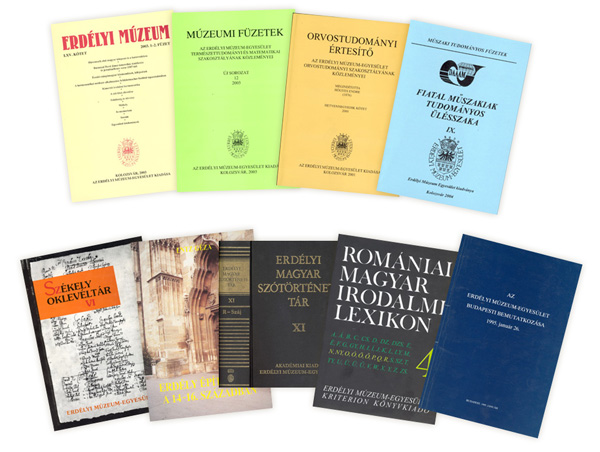
|
|
|
 |
|
|
|
|
 |